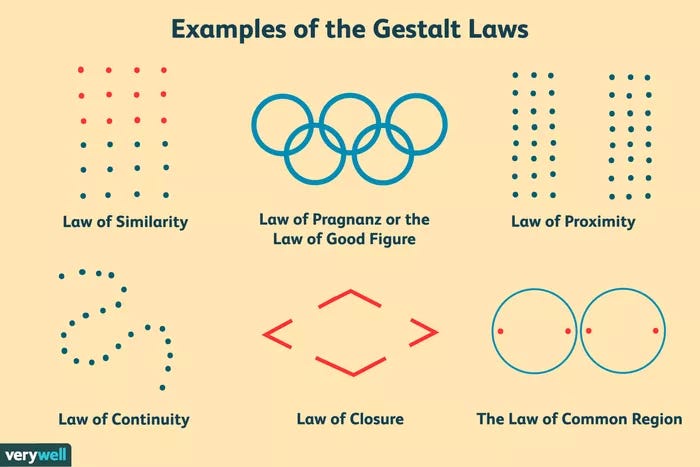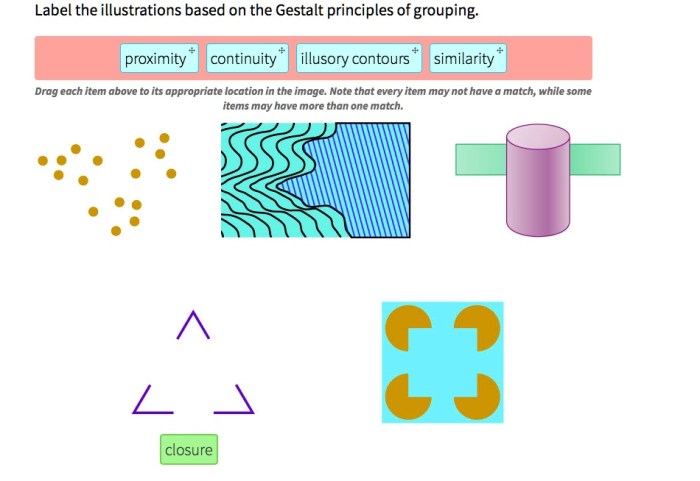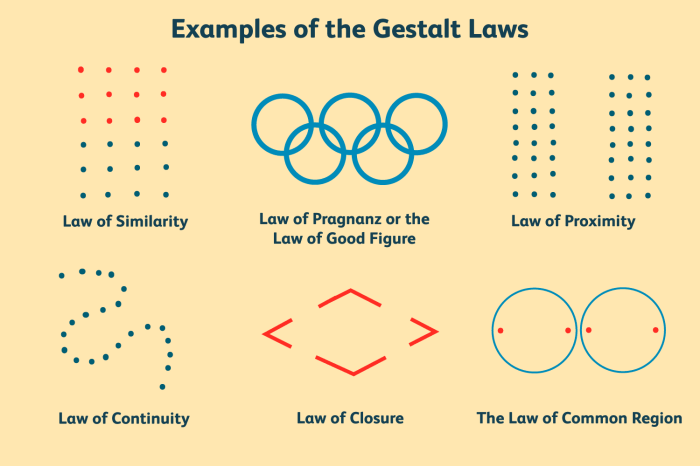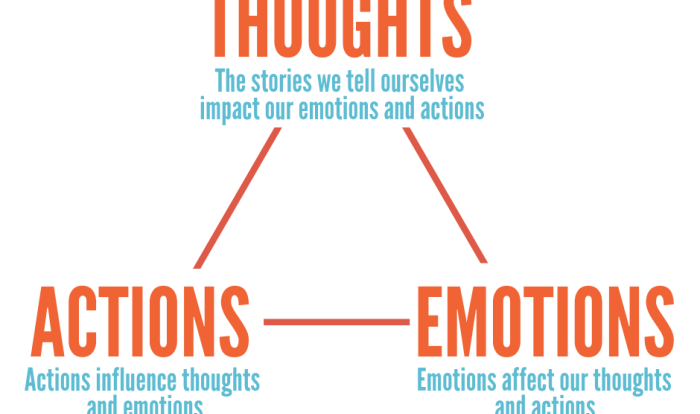Match each Gestalt perceptual grouping rule with its corresponding example. This topic delves into the captivating realm of visual perception, exploring the principles that govern how we organize and interpret visual information. From the intuitive concept of similarity to the intriguing notion of common fate, this exploration unveils the fascinating mechanisms that shape our visual experiences.
Prepare to embark on a journey that will illuminate the intricacies of Gestalt psychology, shedding light on the fundamental principles that orchestrate our perception of the world around us. Let us delve into the captivating realm of visual perception, where the Gestalt perceptual grouping rules reign supreme, guiding our minds in organizing and interpreting the visual tapestry that surrounds us.
Gestalt Perceptual Grouping Principles
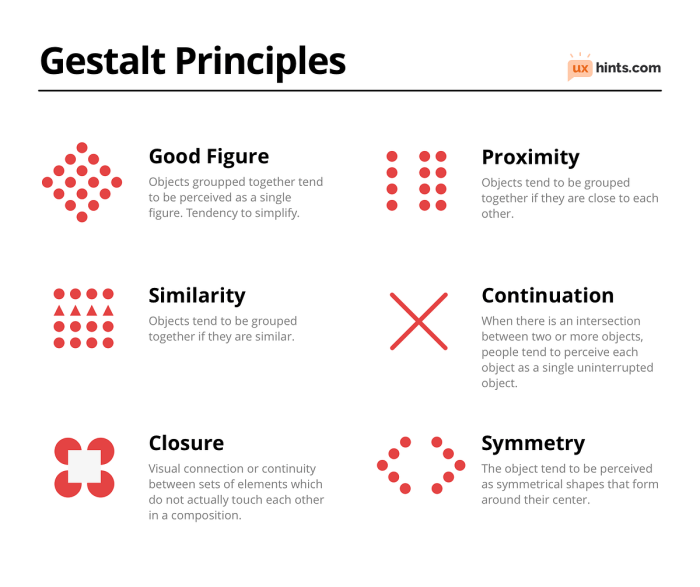
Gestalt psychology emphasizes the importance of perception as a whole, rather than as a sum of its parts. Gestalt perceptual grouping principles describe how we organize individual elements into meaningful wholes.
Similarity
The similarity principle states that elements that are similar in appearance (e.g., shape, color, size) are perceived as belonging together.
Example:A group of red squares among blue circles.
Proximity
The proximity principle states that elements that are close together in space are perceived as belonging together.
Example:A row of dots perceived as a line.
Continuity, Match each gestalt perceptual grouping rule with its corresponding example.
The continuity principle states that elements that are aligned or form a continuous path are perceived as belonging together.
Example:A curved line perceived as a single object.
Closure
The closure principle states that we tend to fill in missing information to create a complete or closed shape.
Example:A circle perceived from a series of dots arranged in a circular shape.
Common Fate
The common fate principle states that elements that move together or in the same direction are perceived as belonging together.
Example:A flock of birds flying in formation.
Key Questions Answered: Match Each Gestalt Perceptual Grouping Rule With Its Corresponding Example.
What is the Gestalt approach to perception?
The Gestalt approach to perception emphasizes the idea that the whole is greater than the sum of its parts. It suggests that we perceive objects and events as organized wholes, rather than as a collection of individual elements.
How do the Gestalt perceptual grouping rules help us organize visual information?
The Gestalt perceptual grouping rules provide a set of principles that describe how we tend to group visual elements together. These rules include similarity, proximity, continuity, closure, and common fate.
What are some real-world examples of the Gestalt perceptual grouping rules?
The Gestalt perceptual grouping rules can be seen in a variety of real-world examples, such as the way we perceive faces, objects, and scenes. For example, the principle of similarity can be seen in the way we group together objects that are similar in shape or color.
